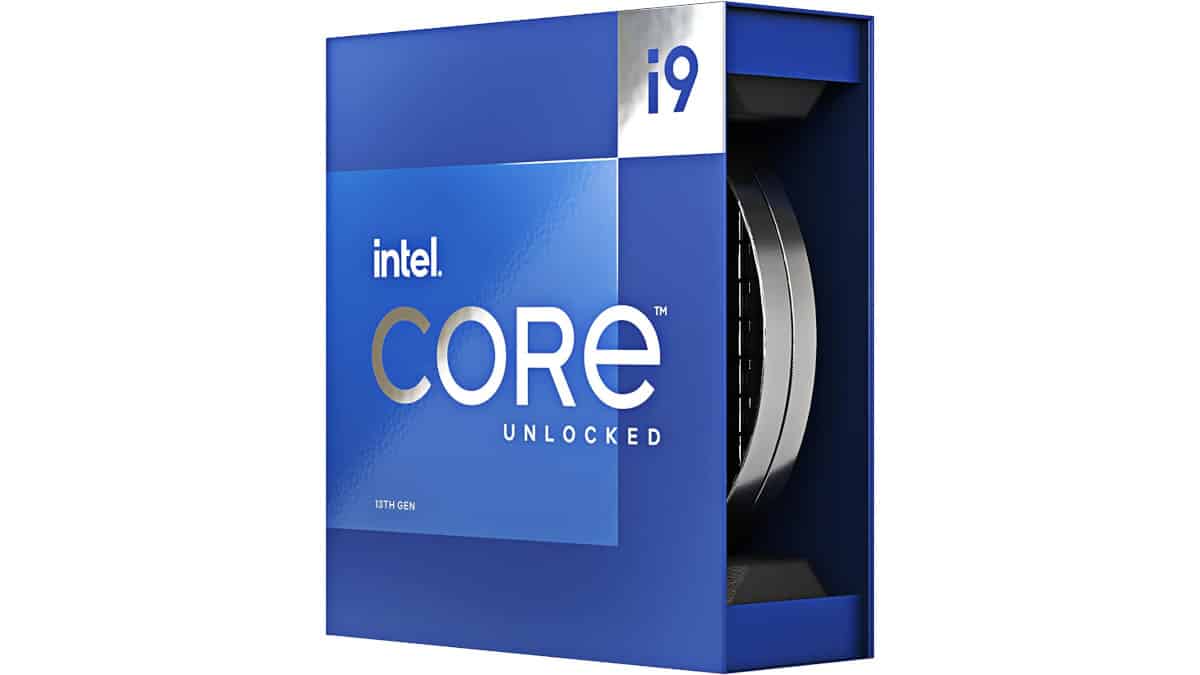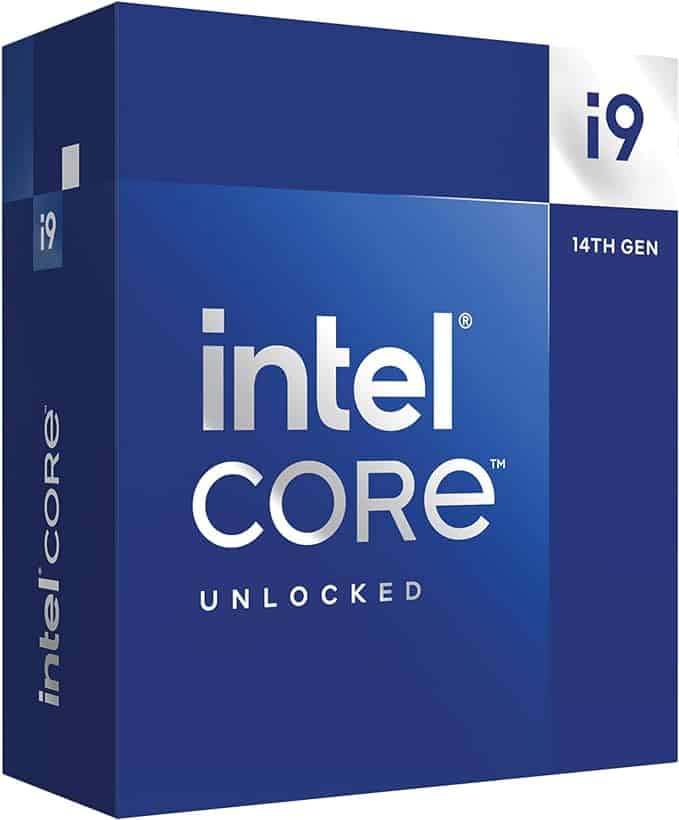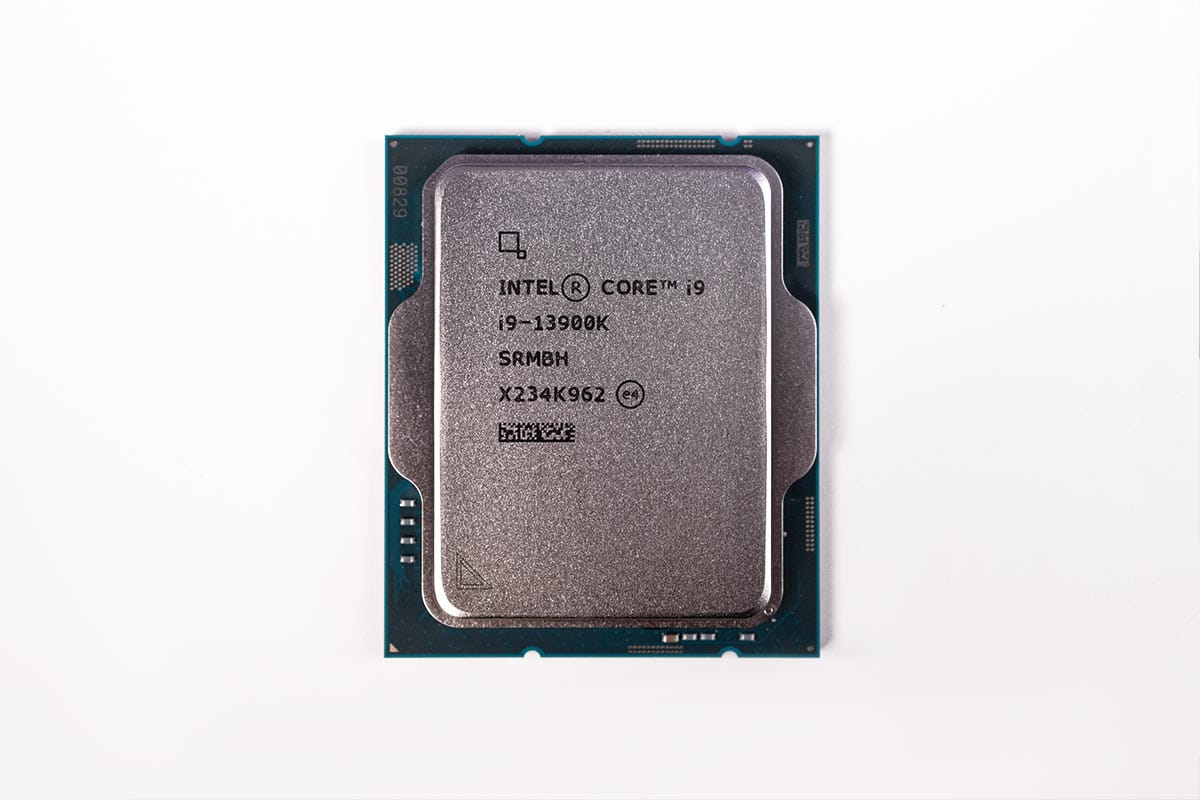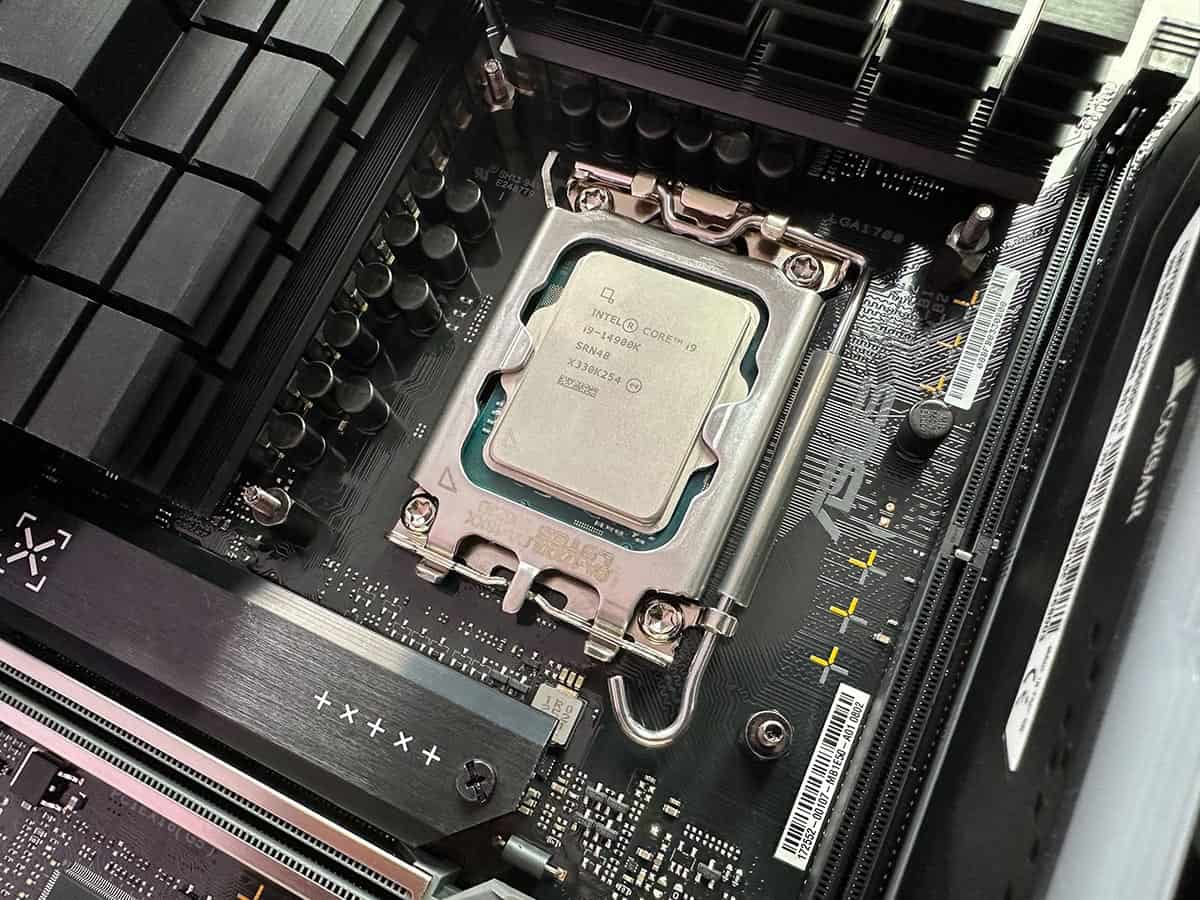Best CPU for Z690 motherboard in 2025 – our top compatible picks

Table of Contents
If you're looking for the best CPU for Z690 motherboard, you've come to the right place.
The Z690 is a powerful motherboard capable of housing multiple generations of Intel CPUs. This means that you have loads and loads of options to choose from, which is great. However, the downside is that you have loads and loads of options to choose from, which can get very confusing.
Prime Day is finally here! Find all the biggest tech and PC deals below.
- Sapphire 11348-03-20G Pulse AMD Radeon™ RX 9070 XT Was $779 Now $739
- AMD Ryzen 7 7800X3D 8-Core, 16-Thread Desktop Processor Was $449 Now $341
- ASUS RTX™ 5060 OC Edition Graphics Card Was $379 Now $339
- LG 77-Inch Class OLED evo AI 4K C5 Series Smart TV Was $3,696 Now $2,796
- Intel® Core™ i7-14700K New Gaming Desktop Was $320.99 Now $274
- Lexar 2TB NM1090 w/HeatSink SSD PCIe Gen5x4 NVMe M.2 Was $281.97 Now $214.98
- Apple Watch Series 10 GPS + Cellular 42mm case Smartwatch Was $499.99 Now $379.99
- ASUS ROG Strix G16 (2025) 16" FHD, RTX 5060 gaming laptop Was $1,499.99 Now $1,274.99
- Apple iPad mini (A17 Pro): Apple Intelligence Was $499.99 Now $379.99
*Prices and savings subject to change. Click through to get the current prices.
To that end, we've put together this guide that lists multiple options from different generations, their details, and pros and cons so you can make an informed decision.
Products at a glance
-
Best CPU for Z690 motherboard overall
Intel Core i9-13900K
-
Best Intel 12th-gen CPU for Z690 motherboard
Intel Core i7-12700K
- Cores: 12
- Threads: 20
- Platforms: Intel Socket 1700
- Boost Clock Speed: up to 5 GHz
- Base Clock Speed: 100 MHz
- L3 Cache: 25 MB (shared)
-
Best budget CPU for Z690 motherboard
Intel Core i5-12400F
- Cores: 6
- Threads: 12
- Boost Clock: 4.4 GHz
- Base Clock: 2.5 GHz
- L3 Cache: 18 MB
- TDP: 65 W
-
Best high-end CPU for Z690 motherboard
Intel Core i9-14900K
- Cores: 24 (8P-16E)
- Threads: 32
- Boost clock speed : P-Core 5.8GHz / E-Core 4.4GHz
- Base clock speed: P-Core 3.2GHz / E-Core 2.4GHz
- L3 Cache: 36 MB
- TDP: 253W
How we picked
When picking the best CPU for the Z690 motherboard, there are a few important factors to consider. We looked at several key features: performance, compatibility, and value.
First and foremost, we considered the CPU's performance. Since the Z690 is a high-end chipset, we wanted to ensure that the CPU we recommended could take full advantage of its features. We looked for CPUs with high core counts, high clock speeds, and plenty of cache memory.
Next, we looked at compatibility. The Z690 chipset is compatible with 12th, 13th, and 14th-generation Intel processors, but you will need to update your motherboard BIOS before installing the latest generation CPUs. We made sure that our top picks were compatible with the Z690 chipset and that they would work well with the latest BIOS updates.
Finally, we considered value. While the Z690 is a high-end chipset, that doesn't mean you need to break the bank when buying a CPU. We looked for CPUs that offered excellent performance at a reasonable price so that you could get the most for your money.
Taking all of these factors into account, we narrowed down the field to the top CPUs for the Z690 motherboard. These CPUs offer excellent performance, compatibility with the latest hardware, and great value for the money.
Best CPU for Z690 motherboard


- Cores: 24 (8P-16E)
- Threads: 32
- Boost speed : P-Core 5.8GHz / E-Core 4.3GHz
- Base speed: P-Core 3.0GHz / E-Core 2.2GHz
- L3 Cache: 36 MB
- TDP: 253 W
- Platform: Intel Socket 1700
- Exceptional gaming and professional performance
- Compatible with PCIe 4.0 and 5.0
- A good amount of cores and threads
- Reached 100°C during our stress tests
- It has a high maximum TDP of 253W
- It comes with a premium price tag
The flagship CPU of Intel's 13th generation sits atop the LGA 1700 socket. However, that isn't the only reason we chose this CPU as the top pick. We thoroughly tested its gaming and real-world benchmark capabilities, and it performed exceptionally well in all scenarios. You can read more about it in our Intel Core i9-13900K review.
This CPU managed 342 FPS in Cyberpunk 2077 and 261 FPS in Days Gone at 1080p low settings. These games were notoriously demanding when they came out, and seeing how easily the 13900K handled them tells you everything you need to know about its gaming prowess.
That said, it isn't a slouch in productivity tasks as well. In the CPU-Z single-core test, it scored 931 points and 16,852 points in the multi-core test. While single-core results generally speak toward a CPU's in-game performance, its multi-core result is impressive, to say the least.
This means the 13900K should be able to handle demanding multitasking and heavy applications like the Adobe suite without a hitch. The lack of stuttering and slow load times should streamline your workflow, increasing your productivity and efficiency.
Regarding its specifications, it features 24 cores divided between 8 performance cores (P-cores) and 16 efficient cores (E-cores), 32 threads, and a 36MB L3 Intel Smart Cache. So, as you can see, its performance is due to the mind-blowing hardware its packing under the hood. Another reason for its stellar performance is the L3 cache which is accessible by all cores.
The Intel Core i9-13900K may not be the newest high-end processor made by Team Blue anymore but time hasn't slowed this chipset down at all.
PC Guide
This means that resources aren't wasted in fetching the data, and access time is reduced, which boosts the CPU’s processing efficiency. It has a base frequency of 2.2GHz (E-core) and a max frequency of 5.8GHz. What this means is that its processing is already pretty fast, but the “K” moniker means that it comes unlocked from the manufacturer.
So, if you have overclocking experience and the right tools for the job, you can take its performance to the next level. However, remember that it has a maximum TDP of 253W, which is already high at normal settings, so overclocking will most likely increase that as well.
During our stress tests, it reached its maximum operational temperature of 100°C even with a 360mm AIO cooler. So, we recommend using a robust CPU cooler and have a casing with adequate airflow. If you're interested in exploring some options, check out our best CPU cooler for 13900K and the best airflow PC case guide for the top picks.
Overall, this is an excellent option for various workloads, whether action-packed gaming or handling workstation-level tasks. However, with such high-performance levels, the energy consumption and thermal output are also high, meaning you'll have to invest in a robust cooling solution, so keep that in mind.
What users say
According to Amazon reviews, the general user experience with this CPU seems to be highly positive. Multiple reviews highlighted its beast-like performance in games and professional tasks, and one user stated, “The i9-13900k has significantly increased my productivity.” However, as we found during our tests, it does tend to run a bit hot, but some reviewers claim that it sits at a comfortable 28°C. This aspect also depends on your ambient temperature, the thermal paste used, and the CPU cooler. So, we recommend using the best thermal paste to keep its temperatures under control.
- Comes with Integrated graphics
- Excellent value for the price point
- Compatible with Gen 5 components
- It has a high TDP of 190W
- Its competition has better energy efficiency
The good thing about the Z690 motherboard is that it uses the LGA 1700 socket, which supports three generations of Intel processors. This gives us more CPU options to select from, and if you're a bit light on the budget but still want a great gaming setup, the Intel Core i7-12700K shouldn't disappoint.
At the time of writing, this processor is going for $250, which isn't too bad considering what it offers. It features 12 cores, split between 8 performance (P-cores) and four efficient (E-cores), 20 threads, a base clock of 2.7GHz, a boost clock of 5.0GHz, and a 25MB L3 cache.
What these specifications translate to is that it should have enough juice to handle tasks of varying complexities, and you always have the option to overclock it to squeeze every bit of performance out of it. That said, it already has a maximum TDP of 190W, which means its thermal output should also be high. So, overclocking could increase that, and running your CPU in that state for extended periods could damage it. We recommend using the best water cooling kit to keep it from thermal throttling.
A great aspect of this CPU is that it is compatible with PCIe 5.0 and 4.0. The Z690 is PCIe 5.0 ready, meaning it has slots to cater to next-gen devices like DDR5 RAM, 5.0 SSD, and more. So, this CPU shouldn't cause compatibility or stability issues with the next-gen components. If you're interested in exploring options, check out our best DDR5 RAM and PCIe Gen 5 SSD guides for the top picks.
The 12700K also has Intel UHD 770 integrated graphics. This means you should be able to run your system without a dedicated GPU. This should come in handy if your GPU suddenly stops or if you need to check various components individually by removing them and checking for system functionality.
Lastly, it has various Intel technologies backing it up, like the Hardware Sheid Eligibility, which ensures the system runs on verified and legitimate hardware, courtesy of the Intel vPro platform.
So, taking its features, capabilities, and price into consideration, the Intel Core i7-12700K is a solid mid-range option for gaming and multitasking workloads. On top of that, you have two whole generations to upgrade to using the LGA 1700 socket.
What users say
At the time of writing, the i7-12700K has a rating of 4.9 out of 5.0, which should give you an idea of how well-received this was among the users. Its reviews are filled with praise for its performance, ease of installation, and versatility. One review said: “The 12th-gen architecture of the i7-12700K really stands out, offering exceptional multi-threaded performance while maintaining efficient power usage.” However, many reviewers also said that it runs hot, but nothing a good CPU cooler can't fix

- Cores: 6
- Threads: 12
- Boost speed: 4.4GHz
- Base speed: 2.5GHz
- L3 Cache: 18MB
- TDP: 65W
- Platform: Intel (LGA 1700)
- It has a low TDP of 65W
- It has a maximum memory bandwidth of 76.8 GB/s
- It has an affordable price point
- It can't be overclocked
- It doesn't have any E-cores
- It has no integrated graphics
The Z690 motherboard can handle powerful high-end processors, but sometimes, our budget doesn't allow it. That said, there are pocket-friendly options compatible with the Z690 motherboard, which should keep your setup up and running through various challenges.
The Intel Core i5-12400F is a solid budget option that should power your gaming and productive sessions. Powered by six cores and 12 threads, this processor has a base clock speed of 2.5GHz, a boost clock speed of 4.4GHz, and an 18MB L3 smart cache.
This means it has enough hardware to handle some demanding tasks but isn't meant for heavy multitasking due to the limited core count. A major difference between this CPU and the others on our list is that it can't be overclocked and has no Efficient cores. It only comes with 6 P-cores, which do all the minor and major lifting directed toward it.
Its decent specifications give it a low TDP of 65W, which can increase to 117W depending on the workload. Compared to the other options on this list, 117W seems very low, and you should get good power efficiency from this CPU.
The i5-12400f has a maximum memory bandwidth of 76.8 GB/s. This should allow for fast processing as more data can travel to and from the CPU to be processed. While it has a maximum operating temperature of 100°C, given its hardware, it shouldn't reach that high. However, it can run hot if the ambient temperature is high. So, we recommend pairing it with the best CPU cooler to keep it performing optimally.
All in all, the Intel Core i5-12400f is a solid budget option that should keep things running without a hitch, given that nothing too extreme is thrown its way.
What users say
According to Amazon reviews, the 12400f has great performance and is a good choice for people on a budget. Some reviewers say that it runs hot, and the accompanying CPU cooler might not be enough to tame it. That said, one reviewer stated: “This is a good mid-tier CPU that can run AAA games in 1080p when paired with a 3070 / 3080 / 4060 GPU,” which should give you an idea about its gaming prowess.

- Cores: 24 (8P-16E)
- Threads: 32
- Boost clock speed : P-Core 5.8GHz / E-Core 4.4GHz
- Base clock speed: P-Core 3.2GHz / E-Core 2.4GHz
- L3 Cache: 36 MB
- TDP: 253W
- Platform: Intel Socket 1700
- Better power efficiency than the 13900KS
- Still uses the LGA 1700 socket
- Better performance than the 13900K in some tests
- The performance increase isn't much
- The price increase isn't justified compared to the performance hike
- Could possibly get similar results with the 13900K overclocked
For our last pick, we went with the flagship CPU from Intel's 14th-generation lineup, the i9-14900K. There is a lot of criticism for the 14th-generation CPUs, and in our i9-14900K review, we took a deep dive into why that is. It performed similarly to the 13900K but took the lead in some scenarios. However, it should have a higher headroom for overclocking, resulting in potentially better performance.
This processor features 24 cores, 32 threads, a base clock of 2.4GHz, a turbo frequency of 6.0GHz, and a 36MB L3 Intel Smart Cache. You might see many similarities between this and the 13900K, and that is because there are. The big difference is between the base and boost clocks, with the 14900K having a 0.2GHz faster base and turbo clock speed.
So we weren't surprised that these processors were going toe-to-toe in our synthetic benchmarks, with the 14900K taking the lead in some and the 13900K outperforming it in others. The same case was in our gaming tests, as the 14900K managed 219 FPS in Cyberpunk 2077 at 1080 low settings, whereas the 13900K managed 215 FPS. The difference of 4 FPS is negligible and won't impact the gaming experience overly positively.
It's the new processor at the top of the mountain, likely the best CPU for gaming.
PC Guide
So, while the performance is similar, it isn't the case regarding the price. At the time of writing, the 14900K is going for $544.99, whereas the 13900K will set you back by $459.99, bringing the difference to around $85. It might not seem like a big difference, but you can save or direct the $85 toward another component, get the 13900K, and overclock it for better performance.
What users say
The user reception of the 14900K showcases its performance in various tasks. Reviewers were glad about its ability to clock high frequencies across multiple cores, which gives it a powerful performance. One reviewer said: “The 14900K, when expertly tuned, becomes a gaming and multitasking powerhouse—achieving 43 to 44k in R23, with 6.2GHz boosting.” This CPU is an enthusiast pick, and if you have the knowledge and tools to tinker around, you can get much more from this CPU than what the specifications let on.
How to choose the best CPU for the Z690 motherboard
There are a handful of factors that you need to consider before choosing a CPU. This is particularly important when looking for a CPU to pair with a motherboard. Different motherboards have varying features and functionalities, and getting a high-end CPU for a low-tier motherboard could hinder its performance. So, to help you make an informed decision, we've listed some of the factors you need to keep in mind while making a decision.
Compatibility
The first thing you need to look for is the CPU’s socket type. The Z690 has an LGA 1700 socket; only compatible CPUs will work with it. The Intel CPUs used LGA 1200 for the 10th and 11th-generation lineup and switched to LGA 1700 for the 12th, 13th, and 14th-generation CPUs.
Besides that, you need to look at the maximum memory the CPU supports and the RAM slots available. While you might not use all the slots, it’s always better to have extra headroom for upgrades. You should also consider the PCIe express configuration and whether it supports PCIe 5.0 or 4.0 hardware because these Intel CPUs support both versions.
Budget
The second and possibly the most important factor you must consider is your budget. It’s always recommended that you operate within your budget and select components that offer a good balance between performance and value.
While the Z690 can support three generations of Intel CPUs, it doesn't mean that you have to opt for the most high-end options. For example, if you want to build a gaming rig, this Intel Core i7-12700K should deliver excellent performance across a range of titles. It should also be a good pair for the latest GPUs like the RTX 4070 Super or the RX 7800 XT, which we've reviewed if you're interested in checking out their performance.
Performance
The level of performance you want out of your setup will also impact the final decision. For example, if you’re going to casually game but want top-notch professional performance, a CPU like the 13600K should serve you well.
However, if you only want to handle light workloads with some gaming on the side, the 12400F might be a worthy option. So, it all depends on the usage and the accompanying components, such as the amount of RAM installed.
Can I use a 13th Gen CPU with a Z690 motherboard?
In short, yes. With the BIOS update, all Z690 motherboards support Intel’s 13th Gen Raptor Lake chips.












